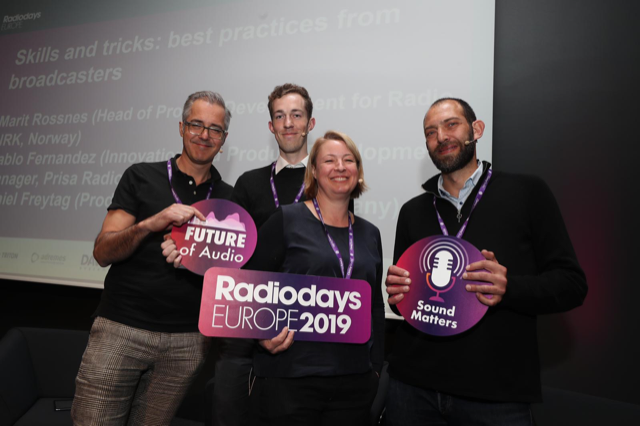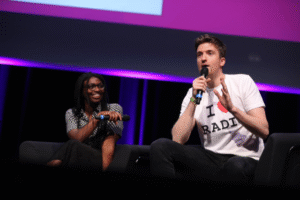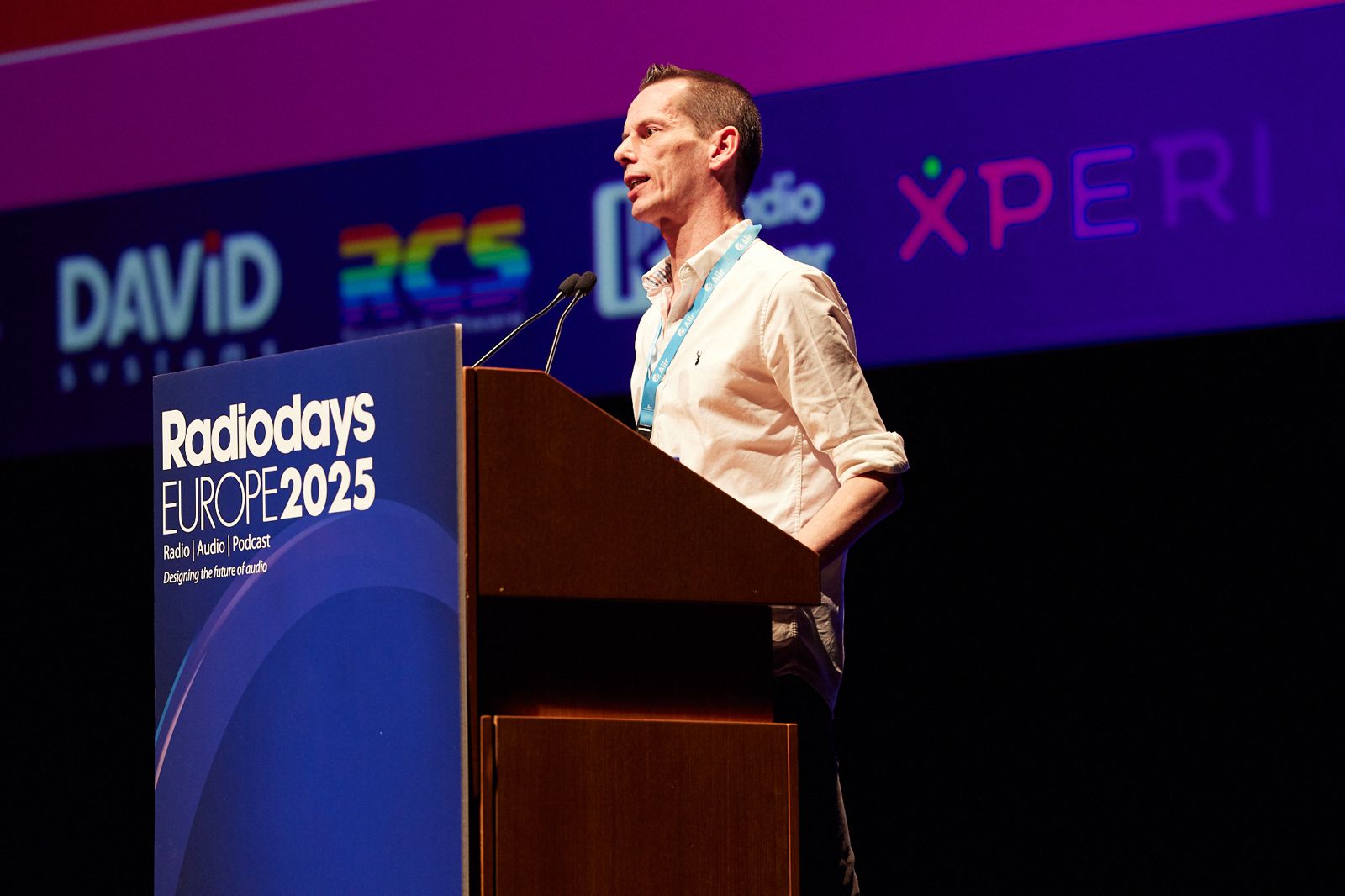
Using Smart Speakers
Marit Rossnes (Head of Product Development for Radio at NRK in Norway), Pablo Fernandez (Innovation and Product Development Manager for Prisa Radio in Spain), Tomas Granryd (Head of Innovation Teams at SR in Sweden) and Daniel Freytag (Product Developer at SWR in Germany) talked through how radio stations can use smart speakers effectively.
Pablo discussed the challenges of smart speakers and some solutions that they have discovered so far. For example, creating local, national and global content needs metadata that adds transcription and tagging, and then distributes content automatically. This means that the journalist can focus on content, while technology takes care of the distribution to smart speakers across the world.
He also talked about the challenge and confusion of multiple similar brands on smart speakers – and his solution of adding synonyms for every brand so that if people ask for similar shows, they will be sent to the same place. He advocated offering radio after sports results too, so that listeners gain more access to the content that stations want them to access.
Daniel discussed personalising radio for voice assistants. He said: “Linear radio is so 2017” and advocated customising the radio experience via user or radio controlled content interaction. That might be the listener saying “play me the news again” and getting it, without rewinding all the content.
Smart speakers are in their infancy – and innovators like these are the ones who will help radio industries around the world develop best practice.




